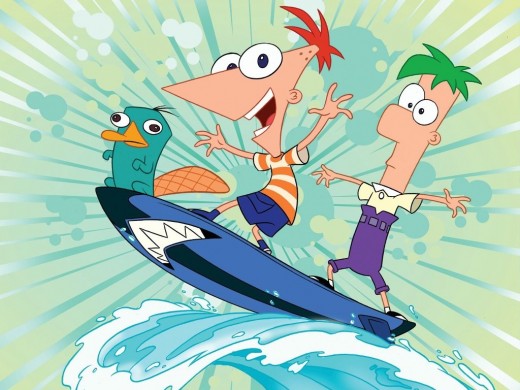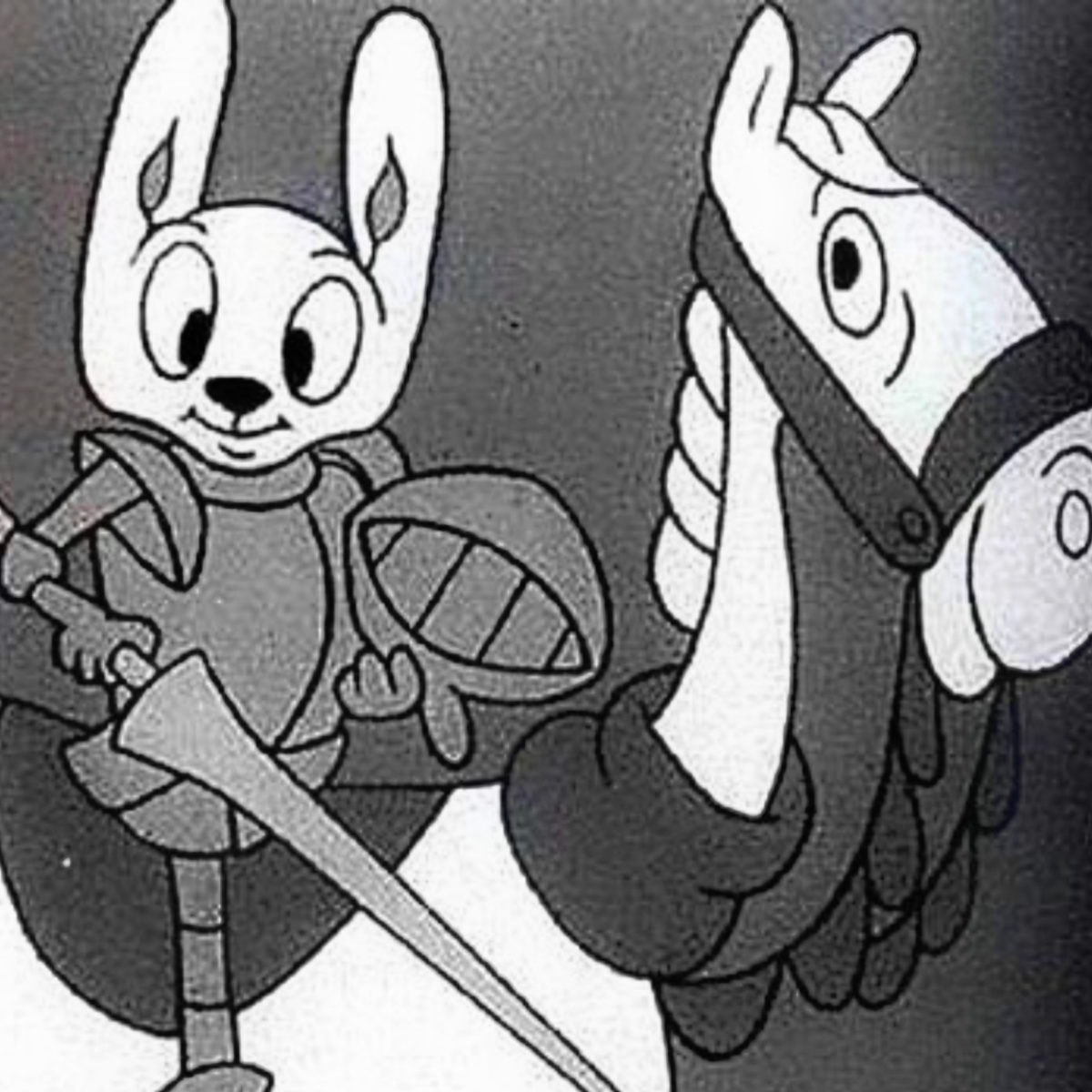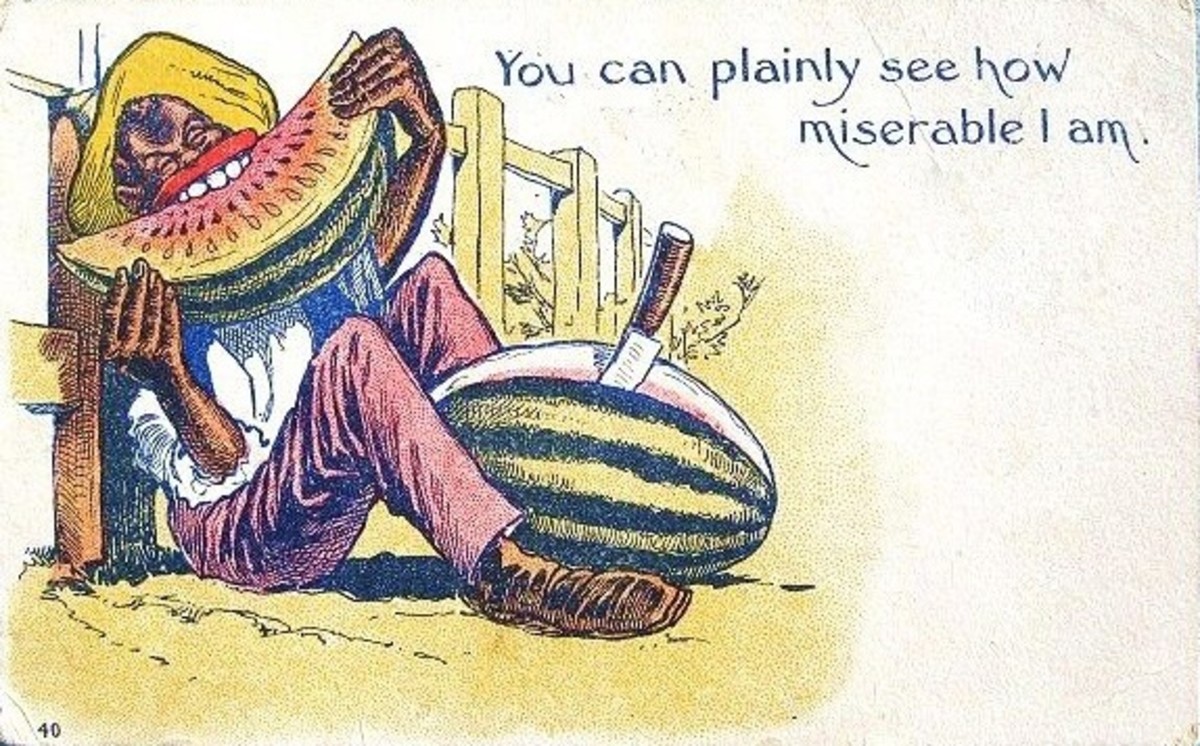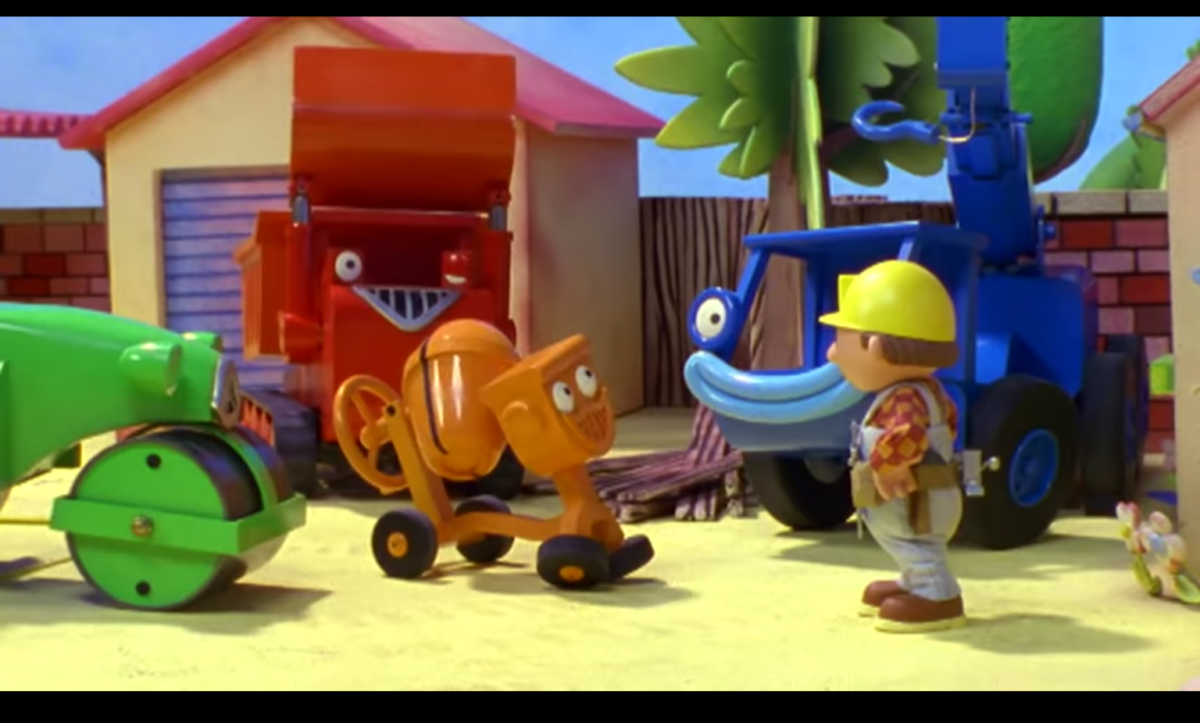- HubPages»
- Entertainment and Media»
- Television & TV Shows»
- TV Shows»
- Children's TV
Cartoon Shows: Positive Connections to Children.

Phineas and Ferb have a whole summer to mess around and enjoy every day with their friends. Each new day is a challenge to figure out what to do for fun, Phineas turns to his brother Ferb and asks “what do you wanna do today Ferb?”. The brothers' never ending curiosity lead them on adventure after adventure to make each summer day amazing. Including their friends and crazy older sister, who tries to get them in trouble in every adventure they attempt. What better way to enjoy a summer day then to build a rollercoaster, a beach with ocean waves, or rocket ship in your backyard?
Cartoons come in all shapes and sizes, well at least the cartoon characters do. Most Cartoon characters resemble children or generally humans of all races. Since the beginning of cartoons and anime like Mickey Mouse and Dragon Ball Z, children have watched with complete focused attention. Something about the imaginary world makes their minds fly with entertainment. Continuously you could see your own children or perhaps a family members children glued to a television set, watching re-runs of their favorite cartoon show for hours. As of today our youth have also become intertwined into the video game craze, applying similar hours of the day to the addicting strategy games. Video games apply the use of cartoons or animated characters throughout its game play, so its no surprise that children would find it appealing. Yes cartoons bring our youth great entertainment and should be emphasized as a good influence in their lifestyles. However that’s the question that I am applying to this hub: Do cartoons of our modern day, influence and educate our children in a positive way?
To make my attempt in the search for such an answer I first had to come to the thought of such a question. What led me to this point was mostly my past experience and involvement with cartoons and animated worlds. As a kid, I watched the Saturday morning cartoons from 6am to noon. This was my release from the drudges of childhood, and it was something that I could count on. I often acted out the scenes of cartoon shows, to the degree I knew it would not hurt me. Sometimes getting on a red cape like Superman and running around trying to fly, or pretending that I was Bugs Bunny walking around with a carrot in my mouth saying “what’s up doc?”. As I got older I realized a lot about the things that influenced me from watching cartoons. I still enjoy watching a good cartoon when I have time, and I love spending time with my daughter watching them. What seemed to influence me is the "real life" things that you can pull out of a fictional cartoon. When I say “real life” I generally mean any type of fact or actual existing idea in the world. I saw a cartoon eat spinach and grow huge muscles on television, I immediately wanted to try spinach. Sometimes cartoons would make reference to historical moments like the California gold rush, I felt like I could literally visualize such history when taught it because I had some kind of reference to it.
Besides the relation of my own personal life to the research behind this essay, I essentially wanted to lay the perspective on the facts for my question. These facts are the relationships children have to cartoons, the knowledge children pick up from cartoon entertainment, and the attitudes children adapt to by the influence of cartoons. Exploring these facts in great detail will lead me to answers that will sum together the ultimate answer in response to my original question. I chose not to tread lightly on the subject of cartoon influence when diving into my research, because I wanted to get all the different perspectives I could find. My research is intended to get a response from parents, academics, TV corporations, and anyone that can provide a different theory on the topic.
Leading the way to answers in this research is “The effects of cartoon violence has on children.”. I discovered this three page essay first and thought it was a great beginning to find the bad influence behind cartoons. Here in this essay Andrew Pahel talks about cartoons showing mischievous behavior and acts of violence. Throughout, Pahel seems to keep the topic consistent providing a layout of what is seen on the cartoon shows and some responses to questions he has asked parents. Often asking if the violent behavior in a Wile E. Coyote and Road Runner cartoon is concerning parents? Looney Tunes was a cast of cartoon characters produced in 1944 that provided short segments of silly real life enactments with the different characters. Some of these Looney Tunes characters consisted of Bugs Bunny, Porky the Pig, Yosemite Sam, Elmer Fudd, Wile E. Coyote, and Road Runner just to name a few. Nearly every episode a character would get hurt or have to enter some sort of violent scene. These scenes could consist of a cut off finger that’s bleeding, or chasing another character to catch them and eat them. Especially in Wile E. Coyotes case, he was always blowing up things with dynamite marked “TNT” and chased Road Runner with a knife and dinner fork, with the intention of eating.
Cause for concern some parents might believe, with so much violent acts in these cartoons. Which is exactly the point behind Pahels topic. One woman responds to this concern by saying, “ In my household, I decide what my children watch.” of course she does not give any indication on whether or not her comment is meant for good or bad. Although Pahel sees this as an opportunity, to explain that cartoons act as a medium between children’s entertainment and parents stress release. Turning into the background of other cultures and how these cultures relate to their own form of cartoon entertainment. So Pahel brings up Japanese anime entertainment, which is a form of cartoons only usually aimed for a mature audience. However in Japanese culture anime is a way of maturing a child beyond the violent stages of life according to Pahel. By allowing fictional characters to participate in the profanity and sexual implications that revolve in real life societies. It brings a connection to the child, so they may understand which way not to act. (Pahel)
Treading into the evil acts cartoons may or may not participate in, was an intentional part of the research I put into this hub. So that it may lead to a broader view of my next two sources that I came across. Which brings me to “Why do so many children’s cartoons and TV shows teach Spanish language to our children.”, provided by Chicago Times Reporting Station. Also later in this hub I will touch on another source topic of "cartoon trains teaching autistic children". Majority of the United States understands that a growing population in the nation is that of Hispanic decent. Which has took a popular turn toward teaching Spanish as second language to the USA. A reporter from the Chicago TRS that wished to remain anonymous throughout this article, will be read as “AR”. Which AR has described a few educational focuses on modern cartoons. AR says that compared to cartoons in the early 50’s to today, a lot of Spanish related teachings have been applied. One such comparison comes from the family favorite Sesame Street, (not a cartoon I know) this muppet enriched children’s television show has made much progress since its original air of 1969. With fun filled puppet characters such as Big Bird, Elmo, Bert & Ernie, and Cookie Monster. AR describes the changes made to Sesame Street over the years and most include Spanish as the primary taught source of education. Other changes include turning Cookie Monster into Veggie Monster to influence children to eat more vegetables. Also Elmo has taken his shine to fame surpassing most of the major players of Sesame Street. As Elmo came to fame he brought forth many songs that teach children rhythmic ways of remembering the alphabet, or how to tie your shoes. All these changes were made in the attempt to gratify parents for all the past concerns and complaints they may have had. However AR makes his topic of teaching Spanish to children as a concern more then a positive connection. The argument that takes place in AR’s article is that although its good to learn a new language in the preference of knowledge and communication. The benefit seems to lean toward empowering only the Hispanic population. AR consumes this argument with a few questions, which don’t quite get answered by the rest of his article. Nonetheless the questions are: Even if mistrust toward Spanish speaking immigrants is present, wouldn’t it be better to understand what they are saying?, Should a person feel forced to learn the language just because immigrants filter the United States?, Is it fair for our children to be forced into a Spanish language through their entertainment?.
Although AR’s questions seem to approach a more delicate political boundary, he is not necessarily wrong. Its true that as children or parents, we should have the right to decide what we do and do not wish to learn. Though the political outlook of Hispanic cultural aspects are not the concern related to the topic of this research hub. When AR did describe this argument of Spanish being taught, it did give an open eye to a key fact that relates to our children's influence or learning. This eye opener is that learning a new language is a coherent decision just like getting a tattoo or body piercing. If you make the decision on your own to experience something new, it could pave the way to understanding the next experience you may have. Like AR says “ Learning a new language could help a person understand more on the next language they learn.”.(AR) So all along the article did have a purpose as to the influence of cartoons on children, because it pointed out that children can accept learning things to broaden their outlook on their future. Which leads us to the second source “ Cartoon trains teach autistic children about emotions”. This might surprise most people that such a breakthrough to autistic children teaching could be brought forward by cartoons. Mrs. Birdie Smith tells in the article I found just how brilliant of a breakthrough this cartoon teaching is. At Cambridge University dept. of Autism Research, Smith conducts studies using a series of 15 animated stories called the Transporters. Which was inspired by the classic cartoon show “The adventures of Thomas the Train.”. These 15 Transporters short shows focused on a different emotion every episode like angry, sad, and happy. Later on they got more complex into teaching sorry, ashamed, tired, and joking. The findings showed children with autism spectrum conditions, had improved emotion recognition after watching the 3D program for 15 minutes a day over a month. Smith concluded that using mechanical vehicles such as trains and trams as the animated characters helped, because they behave in predictable ways. Children with Autism or Asperger Syndrome love order and predictability, so most human emotion is confusing to them. Ultimately with the use of these cartoons created by Smith’s research team, the goal of improving autistic children’s development of social skills has triumphed. (Smith) Its easy to see that not only in autistic children, the influence of attitude learned by children, from cartoons, can have a positive result in their social lives.
Continuing the research on cartoon influence, I want to wrap up the segment of teaching children with my next source. Recently Kate Middleton wrote a short article called, “ Teach Children Through Cartoons”. As just a simple mom working for a magazine company known as Queen Zine, Kate Middleton brings some perfect words to emphasize the sum up of cartoon teachings. Cartoons can represent good and evil, so that a child can understand which attitude can be encouraged or disappointed by others. Children need to be introduced to different natures of cartoons, because of the ever changing world. Various characters in cartoons can provide good guidance by introducing tolerance and the element of education. Another important value is the friendship between the cartoon characters. As result allowing children to understand how to foster friendships. Middleton basically takes everything discussed in this research and sums it up into a few emphasized statements. Middleton makes it easy to understand without having to create all the facts, and uninteresting credibility behind her ideas. She then finishes by saying, “ Watching cartoons with your children brings closeness between parent and child”.
With every step toward my goal, I realized my question was answered several times in the attempt to find more sources. I could answer my question to "good influence on children from cartoons" with anything I found in the previous statements. Surely learning Spanish or acknowledging right and wrong between cartoon characters was proof enough, that cartoons can influence in a good way. However, I came across one last article that seemed to make the entirety of this hubs perspective come to a final destination. BBC media analyst Carilton Aquilson, fills in the blanks with “How do Cartoons on TV affect Children”. To start with, Aquilson proposes a question. Cartoons can become an addiction, make children more violent, are these exaggerations on cartoon affects? Any parent has probably heard something similar to all the publicized negative affects from cartoons, so that’s why Aqulison provides a little story for us. A police case spoken of only a few months ago (from date recorded), about an 11 year old and his friends re-enacting a cartoon episode favorite of theirs. Which made them bury a kid under the sandbox, and in the cartoon episode the kid was supposed to pop out. However, the kid suffocated to death under the sand. With this story in mind Aquilson purposely wants you to think negatively about cartoon shows. His reason is because he wants your head to spin with his next question, “Should it not be obvious to a child about the common things that can hurt them?”. Aquilson continues with an example that a child might attempt to mimic a cartoon character that suddenly walks off a cliff and doesn’t seem to fall. The child then goes outside to the corner of a sand box or a stair well to attempt what the cartoon did, heaven forbid they might use a roof to try it.
When the child realizes they can fall quite easily, they then realize that they cannot do what is taught in cartoons. Aquilson believes it never should come to that point, because I child should understand these things before even making the attempt, not after. Although I agree with Aquilson that a children should understand what they are trying before attempting it, but if not for cartoons teaching them how would they know? Exactly the question Aquilson was looking for, and he continues on explaining the element that was missing from this research all along. If a child asks their parent why the rabbit didn’t fall off the cliff on a cartoon episode, lying to that child just gives reason to blame the cartoon. Most of what our youth pick up on is stuff we don’t fully explain, so they are left with questions. It’s essentially better to tell the truth of what is asked by your child, and if they still don’t understand then follow up with an example. Curiosity only sets in when something is missing or does not make any sense. Adults face puzzles everyday and with maturity we can choose to disregard them as non-important daily consequences. Children do not have that privilege because they naturally find every little detail of their developmental lives as important. So a cartoon provides a little entertainment for your little boy or girl, but when they turn their confidence to you for answers on what they cant understand, should you dismiss the answer they need? Aquilson takes an emotional twist to his writing and tries to emphasize the connection most parents are missing in the topic of how cartoons affect their children. The connection that’s taught, is the parent is what bonds a child to the outcome of their actions from cartoons. (Aquilson)
When looking back we notice that cartoons tend to bring out a little more violence and profanity then we want at times. Although that violence is closely related to what happens in adults daily lives, just showing it in an animated way so a child can get a realization of what’s to come in adulthood. As modern day compares to older cartoon shows we see that over the years some of are habits have changed our youth for the better. By offering children an understanding that vegetables are better for your body then sweets, and the option of learning a language early on to better communicate with others. Through the research we learned that not only will it be helpful in education for children to watch cartoons, but it also has profound results on serious medical conditions such as Autism. The effects of cartoons on a child’s personality could potentially help with their experience in the social network. Giving them the encouragement of making friends and being kind to others. Kids will learn to accept their nature of good and bad, also seeing what the consequences are when attempting something that is looked down upon by society. In this learning process every child goes through when they progressively get older, its identified that the parent will be the tipping of the scale in right and wrong. Every parent has the right to teach their own children the way they want, and some parents may even have a perfectly good reason behind their actions. Thanks to Aquilson we at least have an idea as to what we could expect from the things kids want to learn when watching their favorite television shows. Curiosity may lead the way in our youths lives, but it doesn't mean we have to let harm come to them because of it. So I feel like my question "Can cartoons influence children in a good way?" was answered many times. I can easily see that with every bad idea there is good idea peeking out from behind it. At least in my opinion the research performed throughout writing this hub has given me a better perspective on the connections cartoons have on children.
WORKS CITED
Anonymous Reporter “Why do so many children’s cartoons and TV shows teach Spanish language to our children?”, relations Academic Search Premier & Chicago TRS presented October 2007: Read April 11th, 2011.
Aquilson, Carilton “How do cartoons on TV affect children”, relations Academic Search Premier & BBC Corporation tv.com December 7th, 2008: Read April 16th, 2011
Middleton, Kate “Teach children through cartoons”, relations Academic Search Premier & queenzine.com October 21st, 2010: Read April 15th, 2011.
Pahel, Andrew “The effects of cartoon violence has on children”, relations Academic Search Premier & helium.com February 24th, 2009: Read April 11th, 2011.
Smith, Birdie “ Cartoon trains teach autistic children about emotions”, relations Academic Search Premier & smh.com January 7th, 2010: Read April 11th, 2011.




